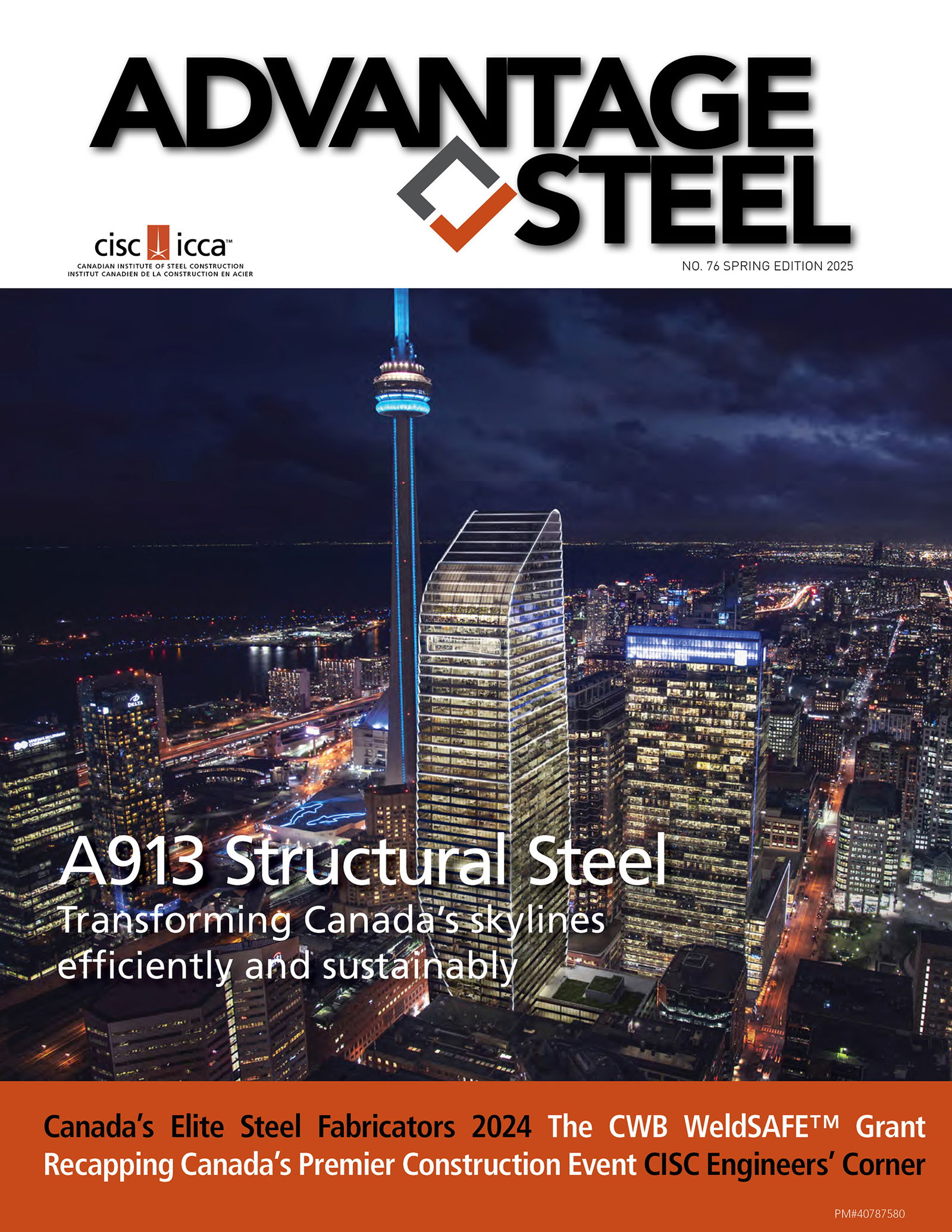A913 STRUCTURAL STEEL

Advantage Steel | Spring 2025
Transforming Canada’s skylines efficiently and sustainably
ASTM A913 is the standard specification for high-strength, low-alloy structural steel shapes produced by thermo-mechanical rolling followed by a quenching and self-tempering process (QST). It was first introduced to the world market by ArcelorMittal in 1990 under the brand name HISTAR and was codified by ASTM in 1993.
Today, A913 is available in yield strengths up to 80 ksi (550 MPa). It has become a go-to resource for structural engineers and fabricators seeking to optimize designs, reduce costs and lower embodied carbon on steel projects.
A Small Production Difference that Yields Big Results
While A913 and A992 are both produced with a thermo-mechanical rolling process, A913 undergoes an additional QST process. In the QST process, hot steel sections (approximately 1,600°F or 850°C) are subjected to swift, controlled cooling (quenching), which is halted before the cross-section’s core is entirely affected. The residual heat within the core facilitates self-tempering as it migrates from the core to the surface.
The QST process provides additional grain refinement to the steel, resulting in higher yield strength and excellent toughness properties without relying on conventional alloy-dependent strength enhancement. Subsequently, A913 can achieve yield strengths of 50, 65, 70 and 80 ksi (350, 450, 485 and 550 MPa) while upholding weldability characteristics on par with or surpassing those of A992 steel.
In addition, QST is an “in-line” process, meaning the treatment occurs immediately after the shape is rolled without moving it to a different production line or reheating element. This inherently efficient process ensures there is no additional lead time for A913 vs. conventional grades and keeps cost premiums to a minimum.
The A913 Advantage A higher yield strength means designers can use a smaller section to carry the same structural load. In fact, the adoption of grade 80 in the design process can result in weight savings of more than 30 per cent.